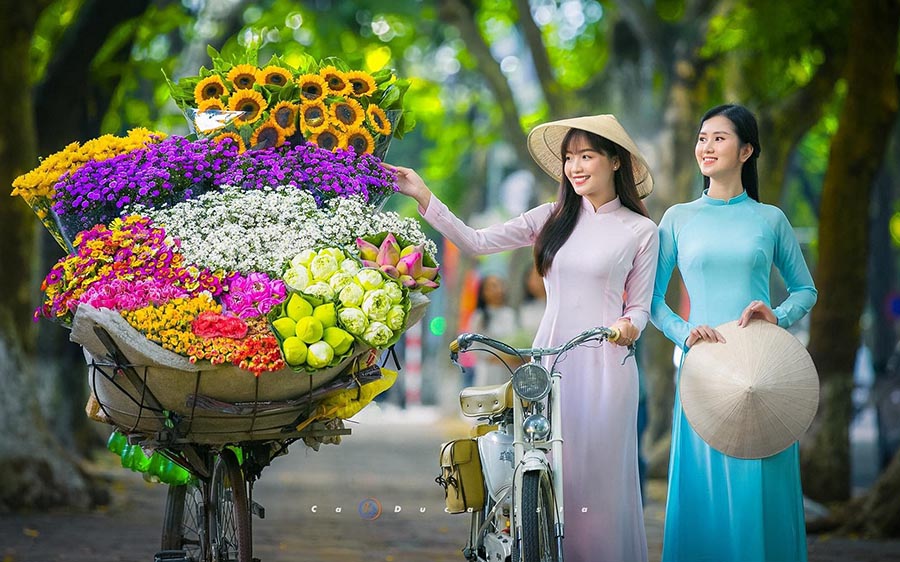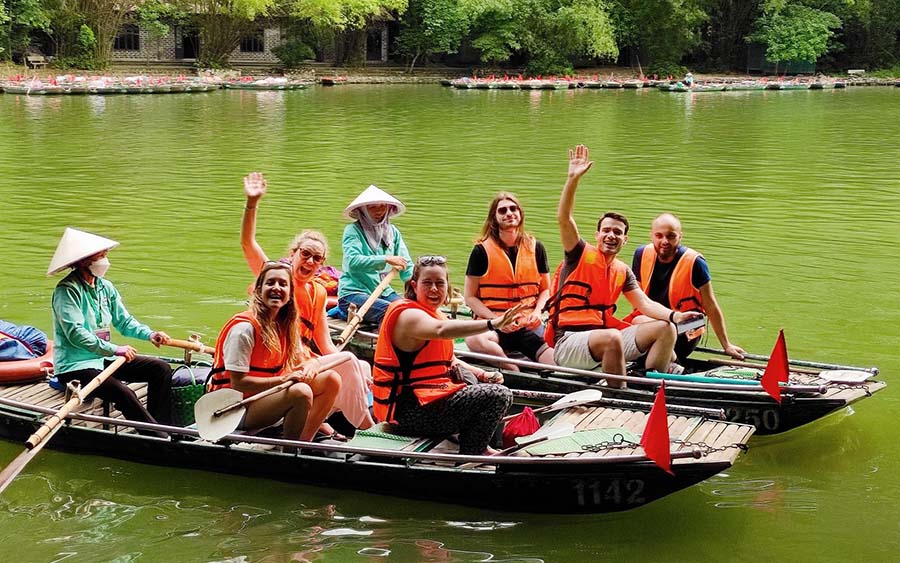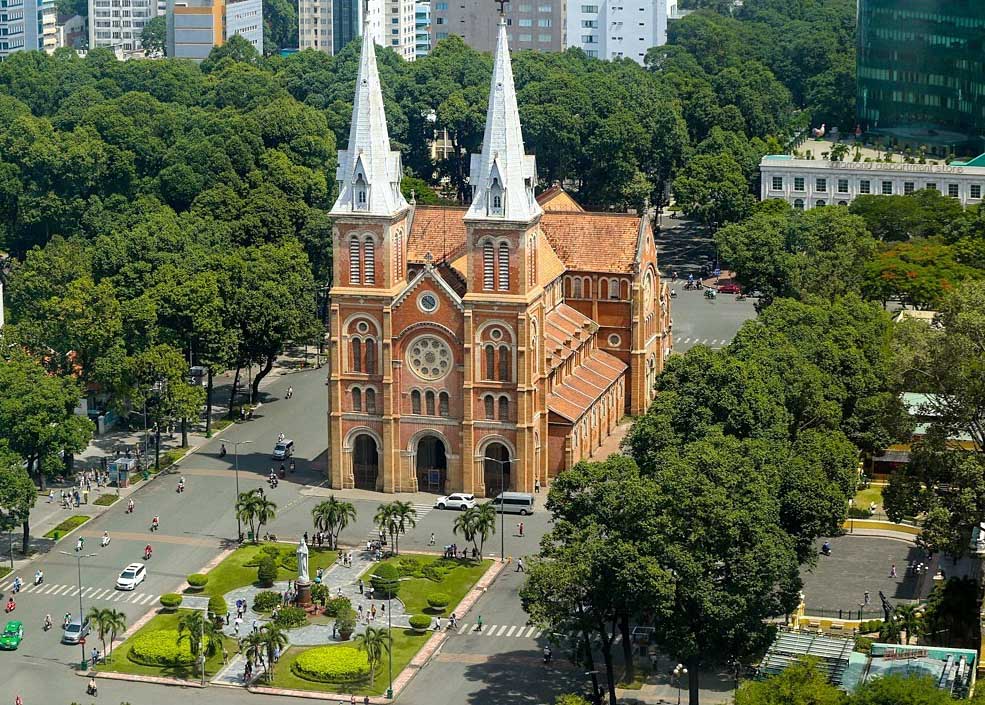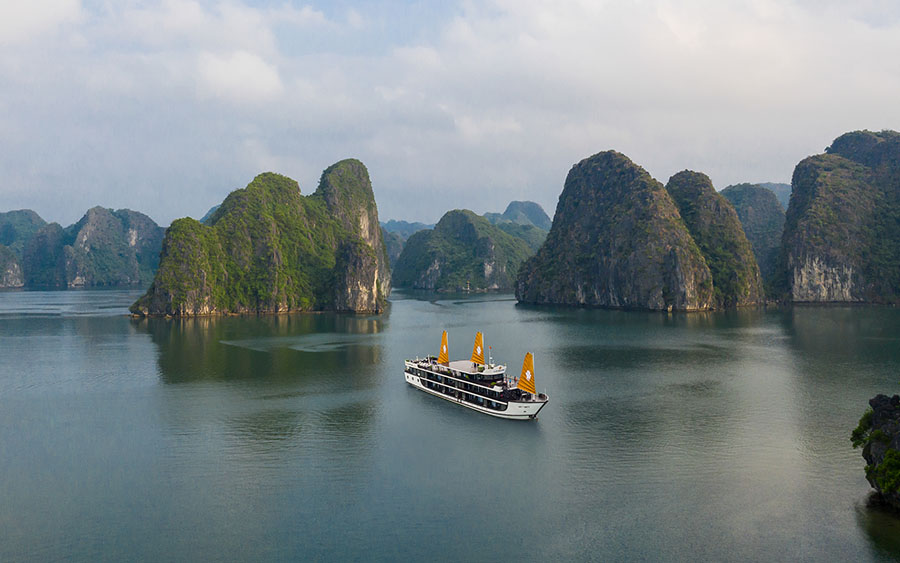Where and How to Get There
The Museum of Cham Sculpture Da Nang is located at Number 2, 2/9 Street, Hai Chau District, Da Nang City. This location is right next to the Dragon Bridge and APEC Park. Therefore, when you visit Da Nang, you should not miss this wonderful destination.
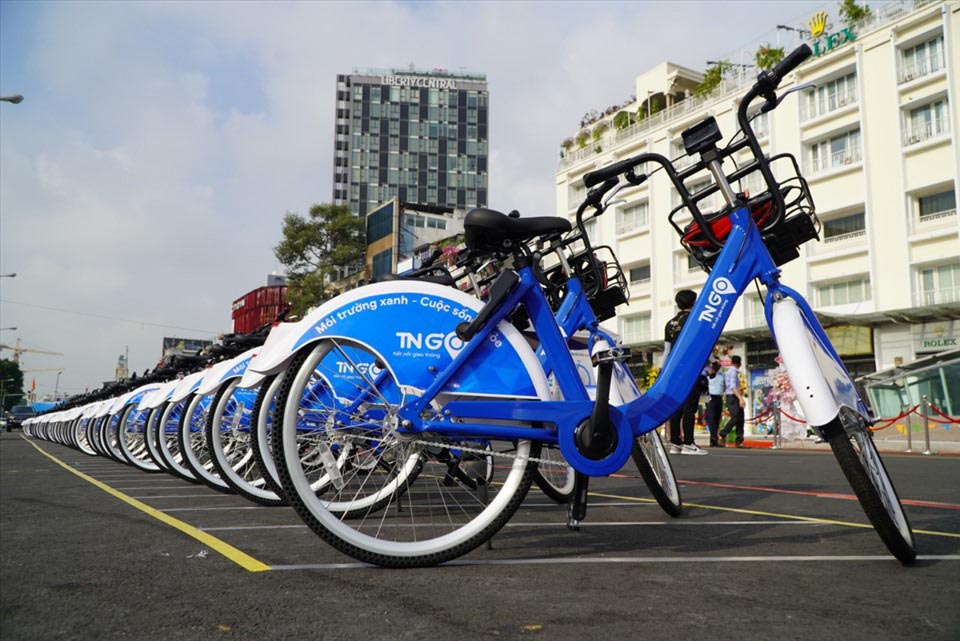
Using public bicycles is a great way to explore the city
Being situated in the city center, it is easy to travel to this museum. You can visit it while strolling along the Han River. Alternatively, you can get there using public bicycles to protect the environment.
Da Nang City has up to 61 public bicycle stations, making them a great means of transportation for exploring the city. The bike rental fee is $0.41 per half an hour, and you can unlock the bike by using the TNGO app.
Opening hours and Ticket prices
The museum is open daily from 7:30 AM to 5:00 PM. The admission fee is $2.43/person/visit.
The museum offers guided tours for groups of five or more. Visitors can listen to the guided tour in English, French, and Vietnamese. To use this service, you need to register before 10:00 AM for morning tours and before 4:00 PM for afternoon tours.
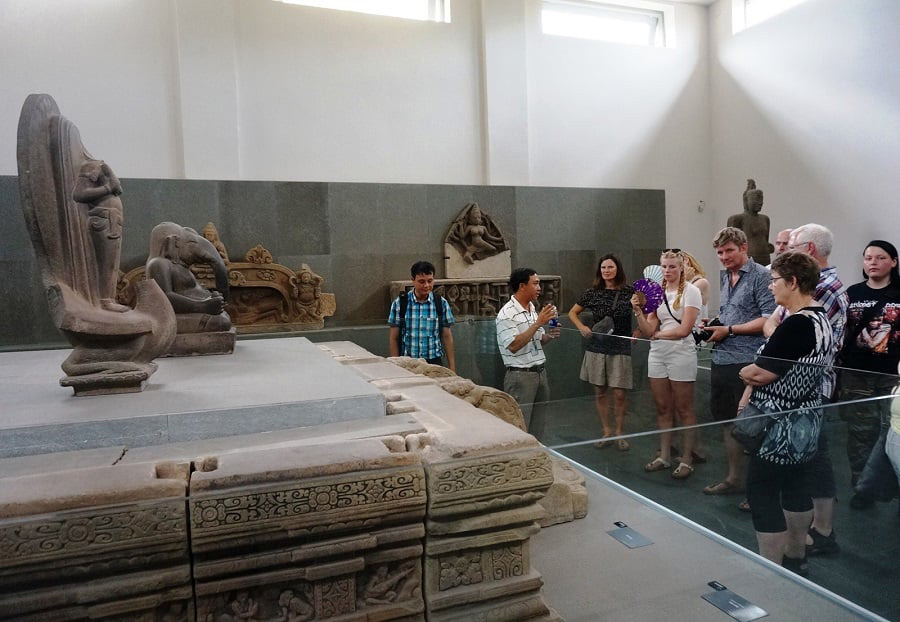
Tourists listen to the tour guide's explanation
Additionally, you can also use the audio guide service by following these steps:
-
Connect to the museum's Wi-Fi.
-
Access the website https://chamaudio.com.
-
Choose your preferred language (Vietnamese, English, or French).
-
Scan the QR code on the exhibits in the order of your visit to listen to the audio guide.
A Glimpse of History
The Da Nang Museum of Cham Sculpture was built in 1915 and officially opened to the public in 1919. The museum was planned and constructed by French archaeology enthusiasts and architects to preserve the remaining sculptures of the Champa civilization.
Over 100 years, with various renovations and expansions, the museum has become the largest repository of Cham cultural artifacts in Vietnam. The total exhibition area in the museum is over 6,000 square meters, of which more than 2,000 square meters are dedicated to displaying ancient artifacts.
Exhibition Spaces
The Da Nang Museum of Cham Sculpture is divided into thematic rooms. These rooms showcase artifacts from different regions and provinces where remnants of the Champa civilization have been discovered.
Tra Kieu Exhibition Room
-
Location: Duy Son Commune, Duy Xuyen District, Quang Nam Province.
-
Artifact dating: 10th-11th century, 5th-6th century.
-
Prominent artifacts: Fragmented altars, lingas, decorative reliefs, temple foundations.
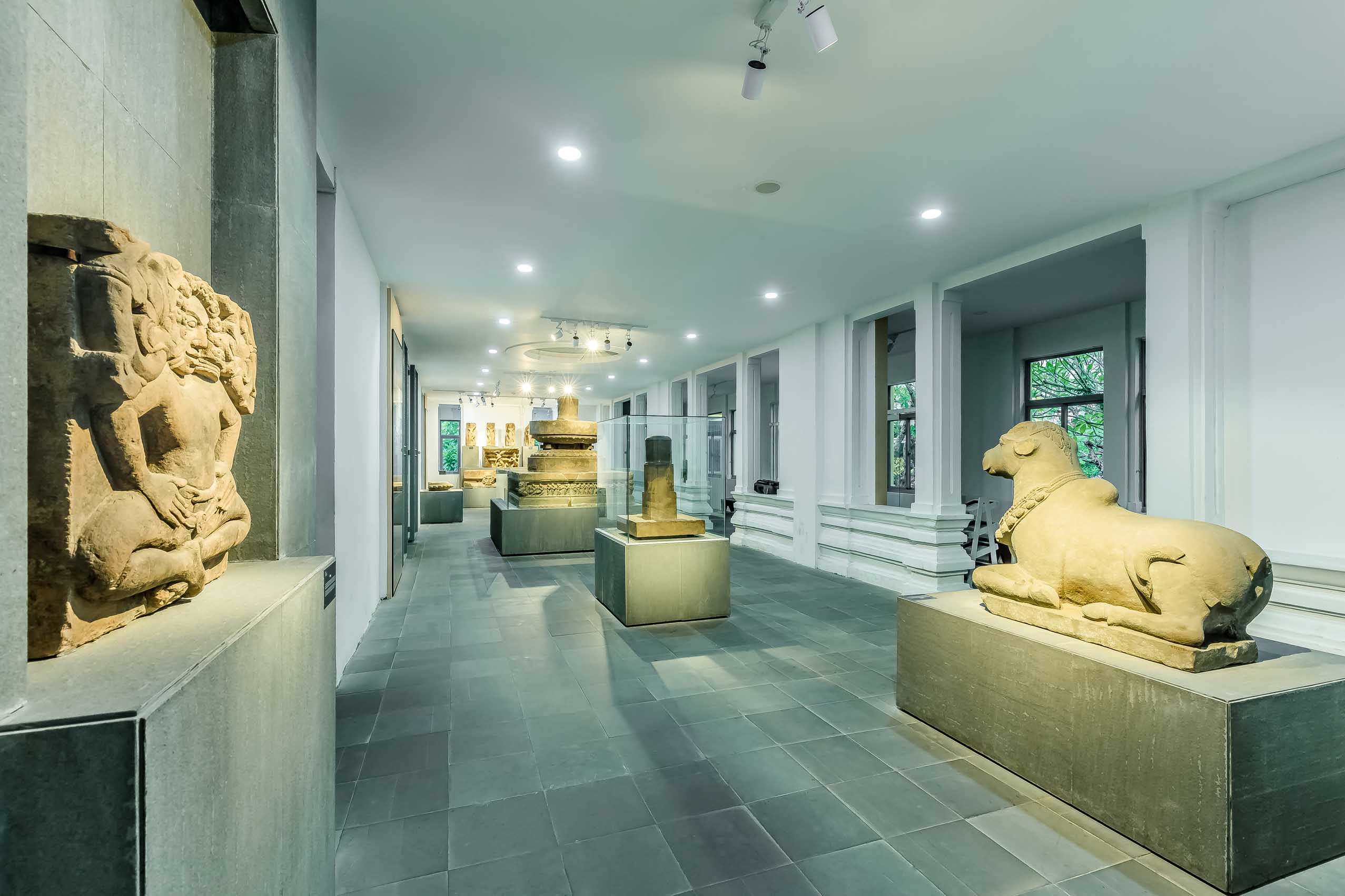
Tra Kieu Exhibition Room
The artistic style of this period is characterized by softness, liveliness, and diversity in costumes and jewelry. Referring to ancient geographical documents, researchers have identified Tra Kieu as the former capital of the Champa kingdom.
My Son Exhibition Room
-
Location: 30km west of Tra Kieu, in Quang Nam Province.
-
Artifact dating: 4th-5th century, 10th-11th century, and 11th-13th century.
-
Prominent artifacts: 70 towers in the My Son Sanctuary, altars, and Brahma statues.
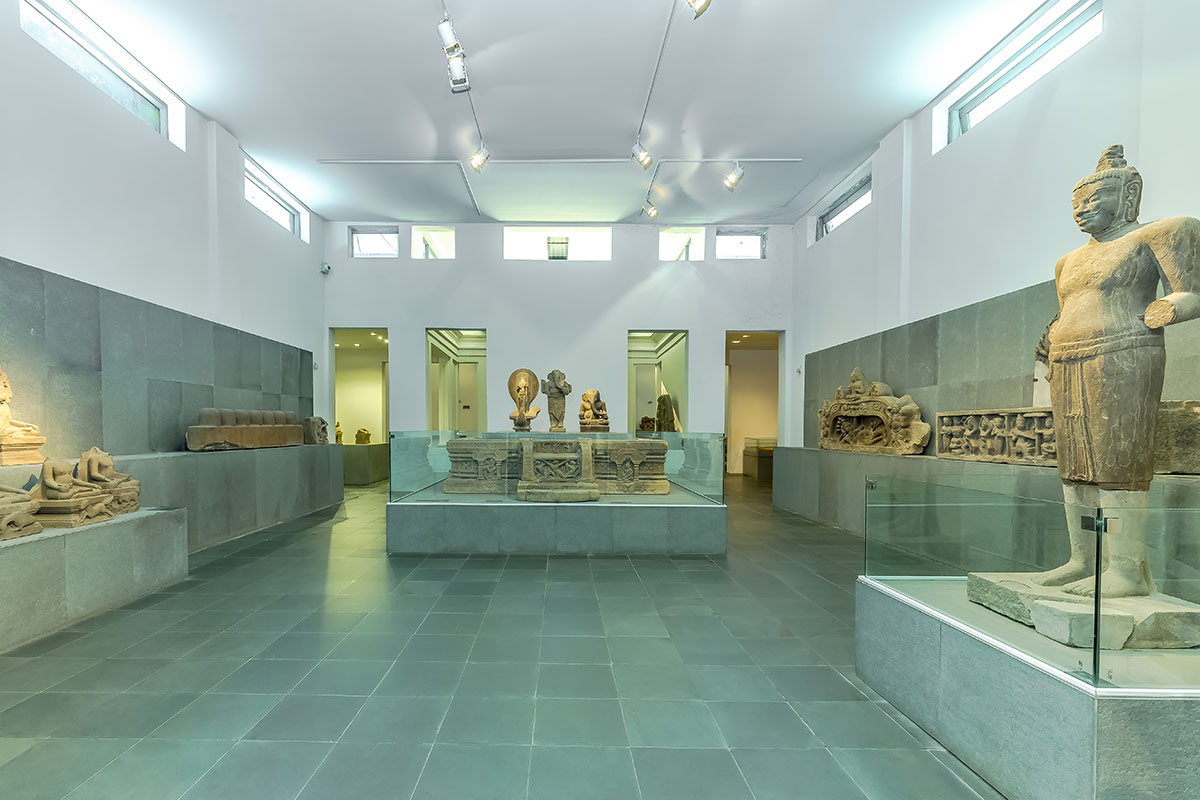
My Son Exhibition Room
The artifacts displayed in the My Son room represent various styles in the development of Cham's sculptural art.
Dong Duong Exhibition Room
-
Location: 20km south of My Son Valley, in Quang Nam.
-
Artifact dating: From 875 AD.
-
Prominent artifacts: Dong Duong altar, Laksmindra Lokesvara statue.
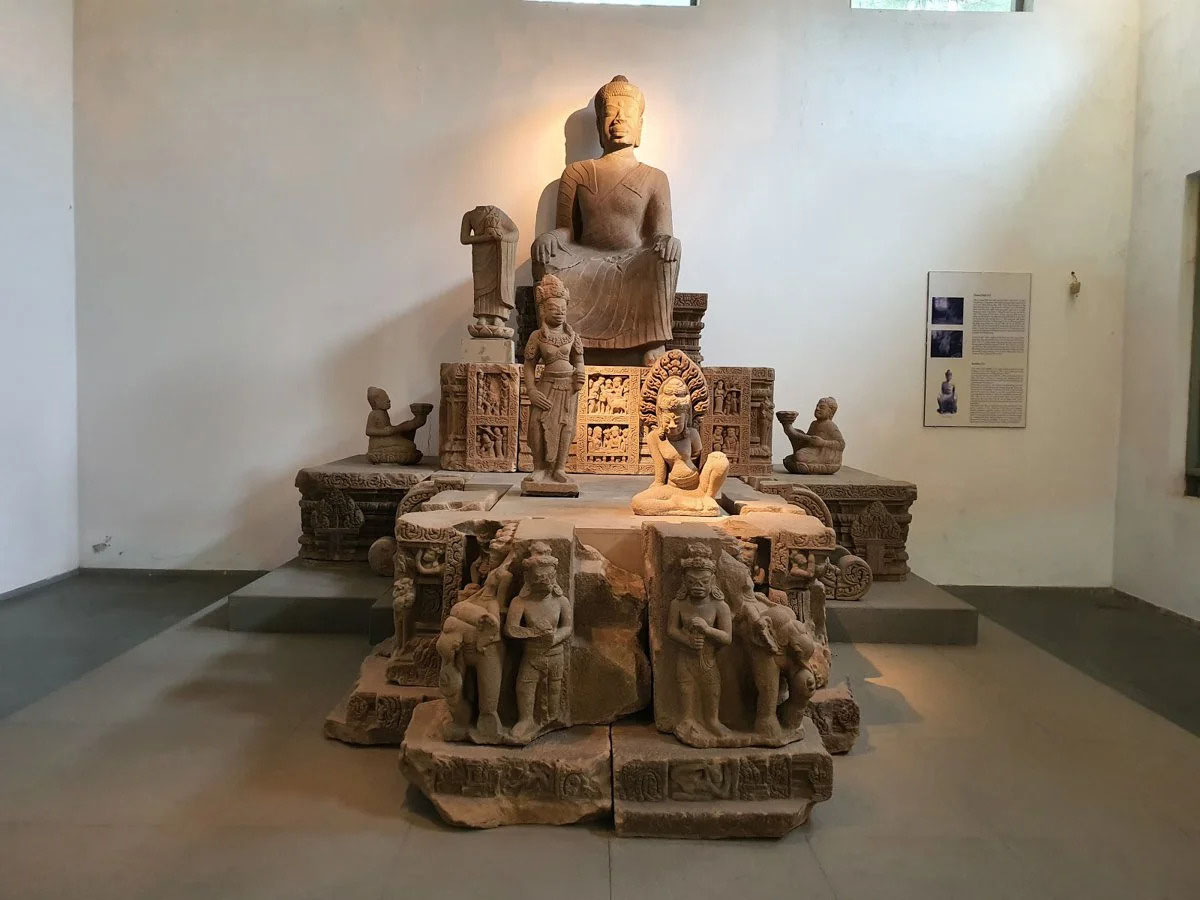
The pieces and sculptures are assembled to create a beautiful masterpiece
The Buddhist sculptures at Dong Duong reflect the development of Mahayana Buddhism in Champa. Despite influences from China and India, the architecture and sculptures of Dong Duong still carry strong indigenous elements.
Thap Mam Exhibition Room
-
Location: Nhon Thanh Commune, An Nhon District, Binh Dinh Province.
-
Artifact dating: 12th-13th century.
-
Prominent artifacts: Dragon statues, Brahma statues.
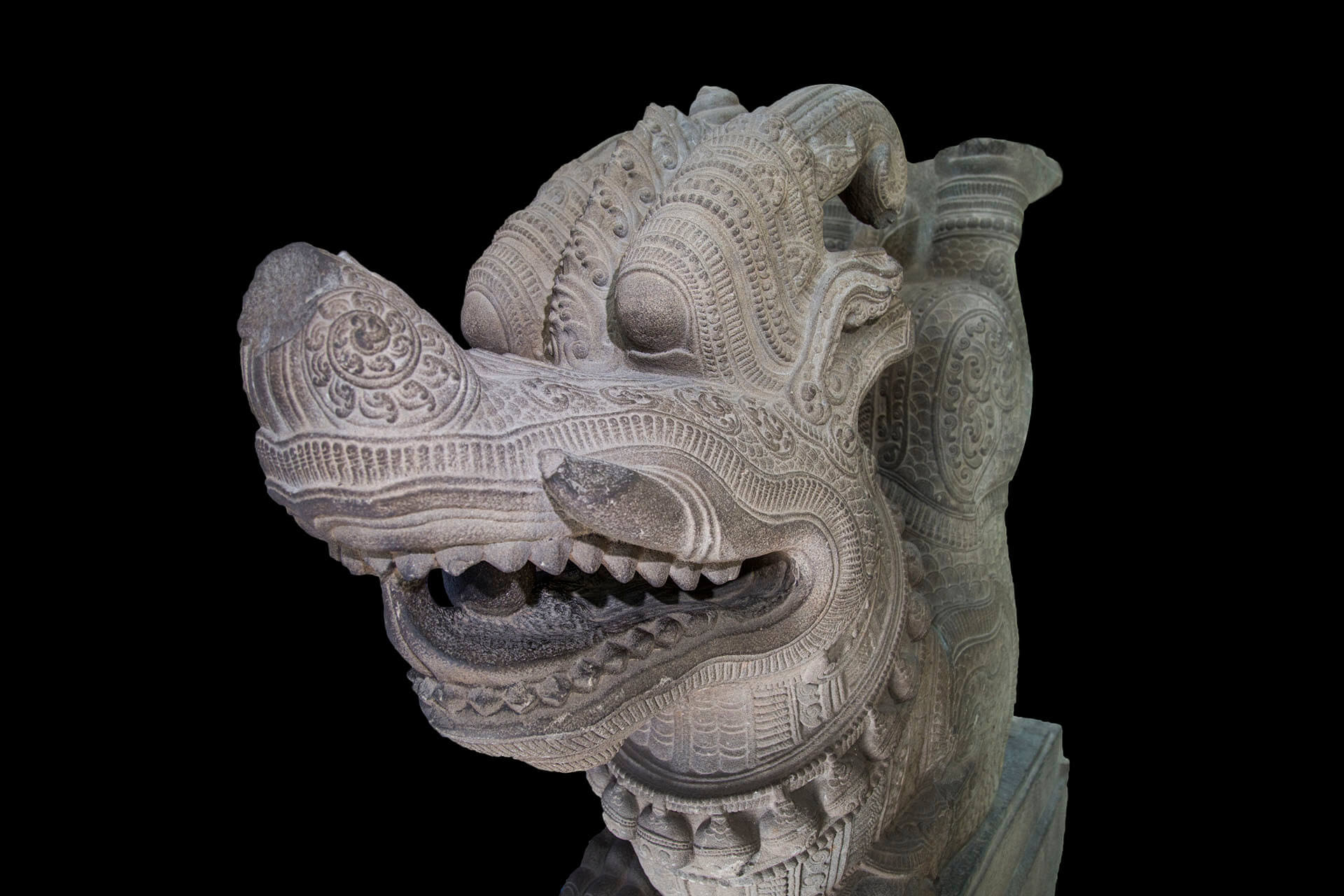
The dragon head statue at Thap Mam Exhibition Room
The excavation yielded a large amount of artifacts weighing up to 58 tons, including large-sized statues and stone decorative elements. The artistic style of this period is complex and meticulous but falls within a standardized framework, lacking flexibility.
Quang Binh, Quang Tri, Hue Exhibition Room
-
Location: Quang Binh, Quang Tri, Hue provinces.
-
Artifact dating: 6th-7th century.
-
Prominent artifacts: Champa towers in Hue, foundations, inscriptions, and Bodhisattva statues.
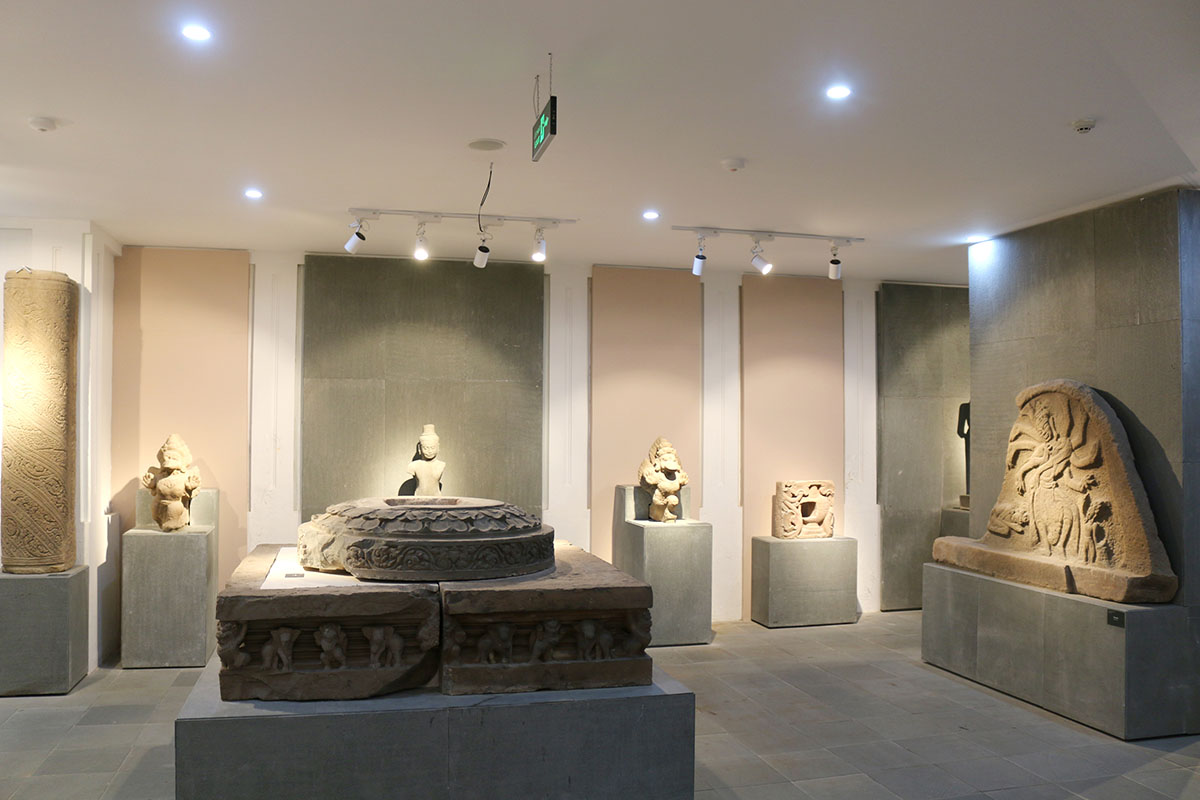
Quang Bình, Quang Tri, Hue Exhibition Room
The artistic style of the sculptures shows the unity of this region with the neighboring regions to the south, Da Nang and Quang Nam, in the 9th-10th centuries.
Da Nang Exhibition Room
-
Location: Phong Le, Qua Giang, Xuan Duong heritage site.
-
Artifact dating: 9th-10th century.
-
Prominent artifacts: Shiva statue, inscriptions, bas-reliefs.
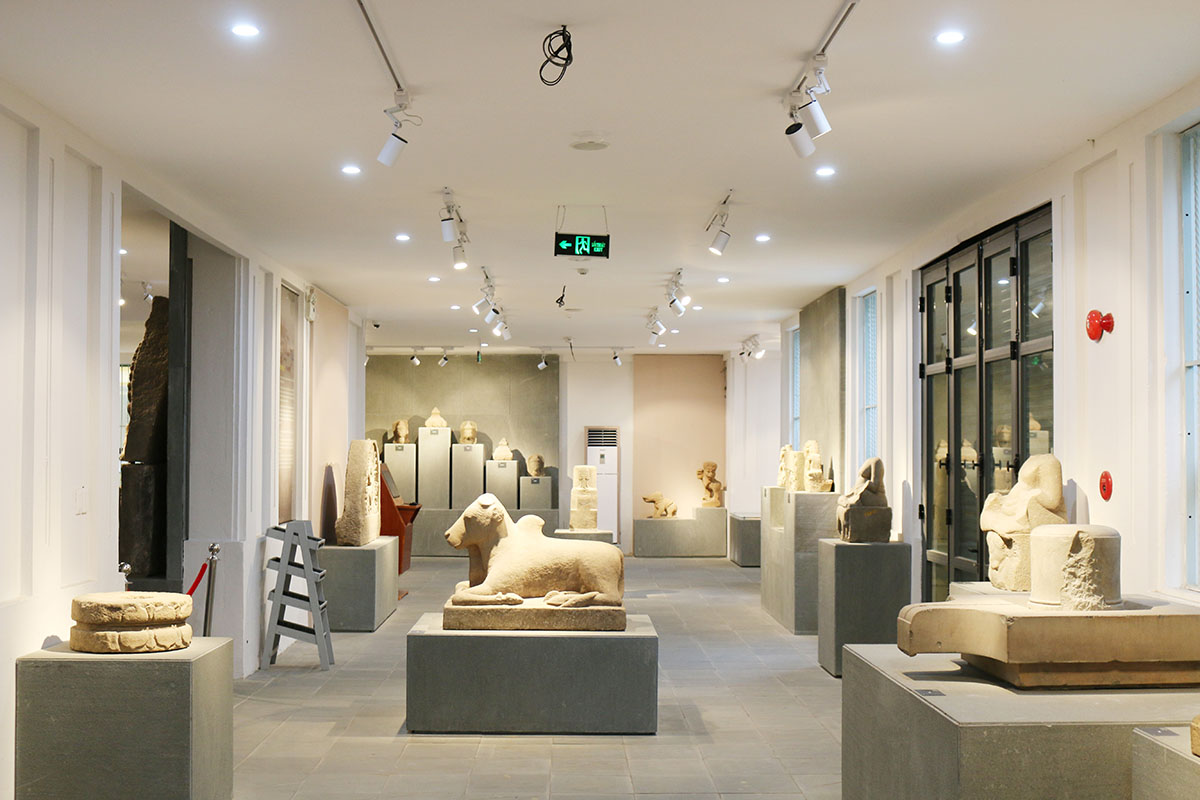
Da Nang Exhibition Room
The sculptures, inscriptions, and architectural traces demonstrate that the Da Nang region was an economically and commercially developed area of the Champa Kingdom from the 9th to the 13th centuries.
Quang Nam Exhibition Room
-
Location: Quang Nam.
-
Artifact dating: 4th-13th century.
-
Prominent artifacts: Krishna, temples, bas-reliefs.
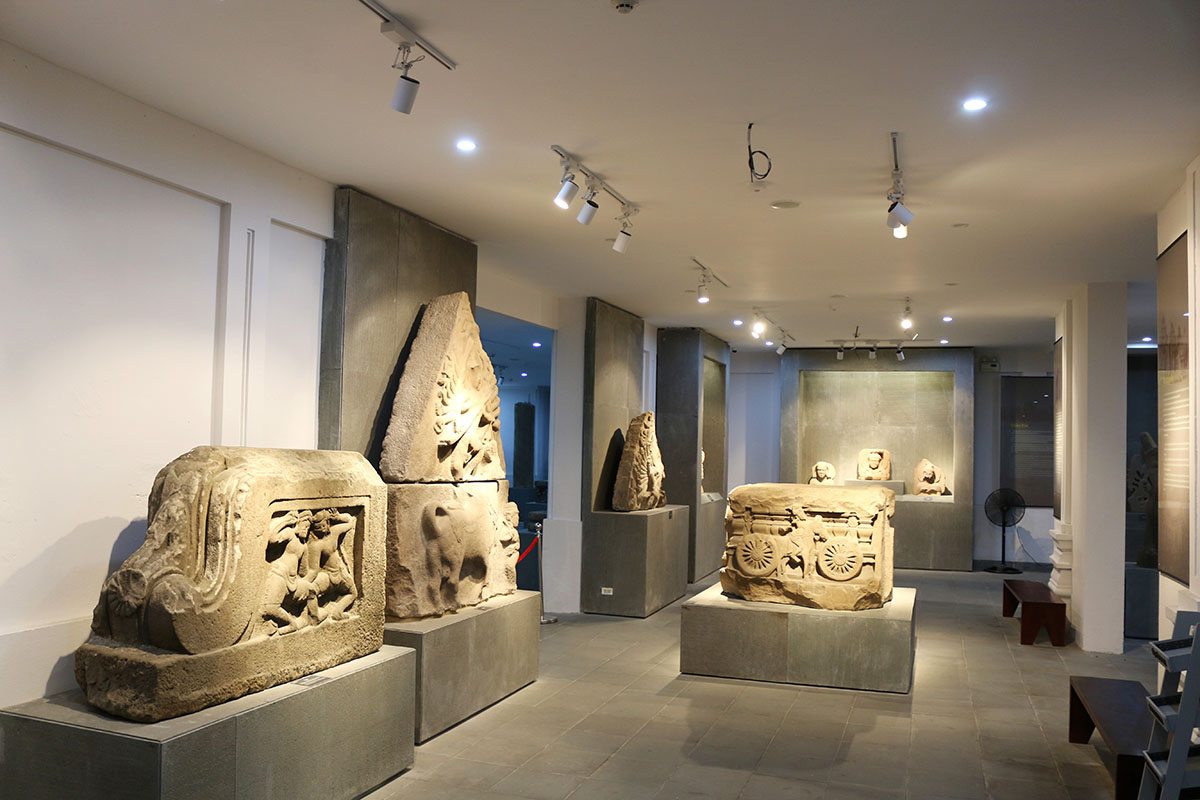
Quang Nam is an important central area of the Champa civilization
In addition to a large number of artifacts from the Tra Kieu, My Son, and Dong Duong sites, Quang Nam also has other archaeological sites. They demonstrate that Quang Nam was an important center of the Champa Kingdom.
Quang Ngai Exhibition Room
-
Location: Quang Ngai.
-
Artifact dating: around the 11th century.
-
Prominent artifacts: Court music instruments, Durga, large temple complex at the Chanh Lo site.
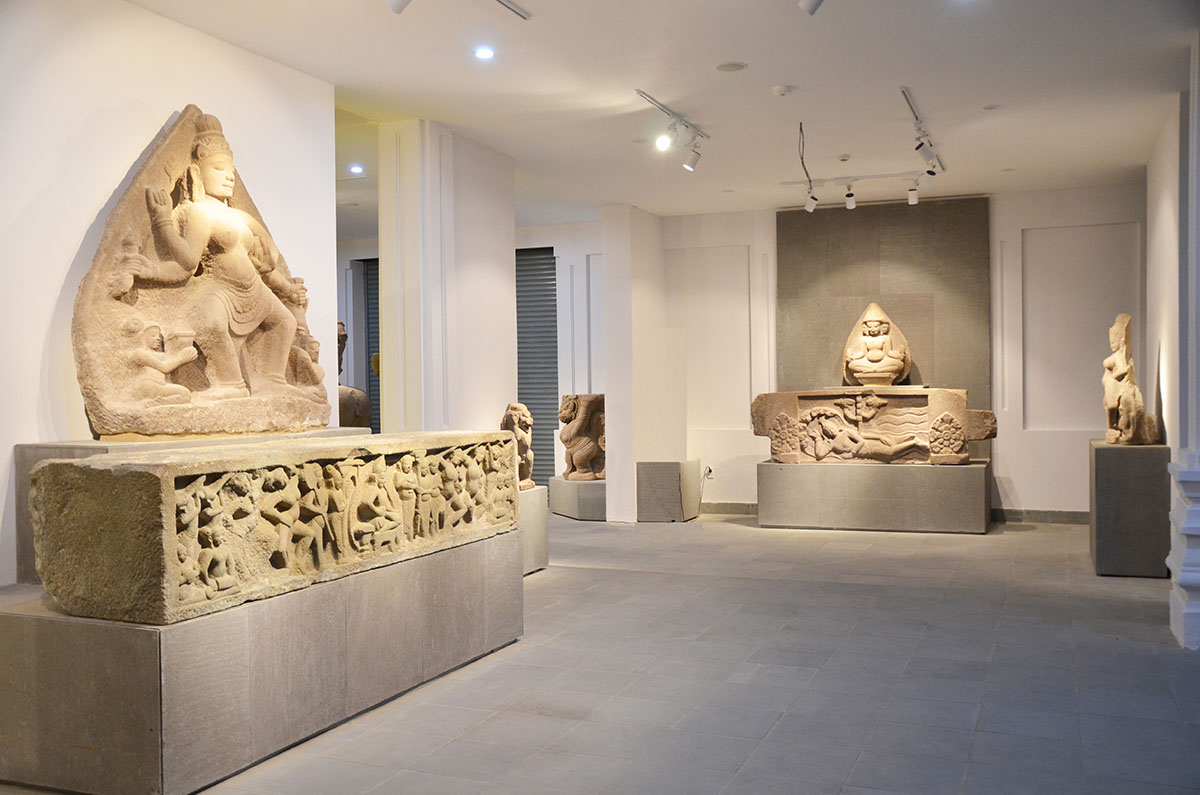
The large-sized artifacts in Quang Ngai Exhibition Room
Since the early 20th century, archaeologists have discovered Champa relics in various locations in Quang Ngai province, such as Dong Phuc, Phu Tho, Co Luy, and Chau Sa. The most recent discoveries include the Chanh Lo site and the Thien But Mountain.
Binh Dinh - Kon Tum Exhibition Room
-
Location: Binh Dinh - Kon Tum.
-
Artifact dating: 14th-15th century.
-
Prominent artifacts: Champa towers, altars, anthropomorphic statues, divine statues.
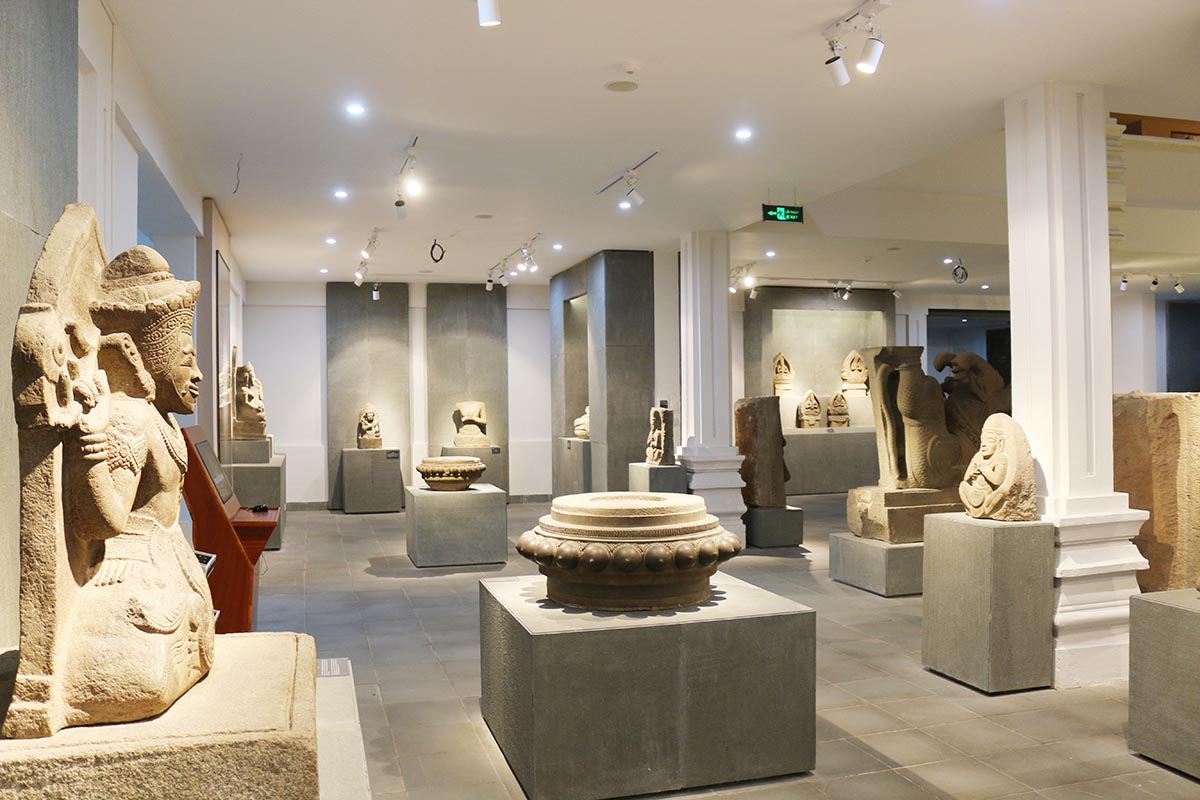
Binh Dinh - Kon Tum Exhibition Room
Binh Dinh was once an important center of the Champa Kingdom, mentioned in some inscriptions with the name Vijaya.
Van Khac Exhibition Room
-
Location: On stone, and rock walls.
-
Artifact dating:: Various periods.
-
Prominent artifacts: Inscriptions.
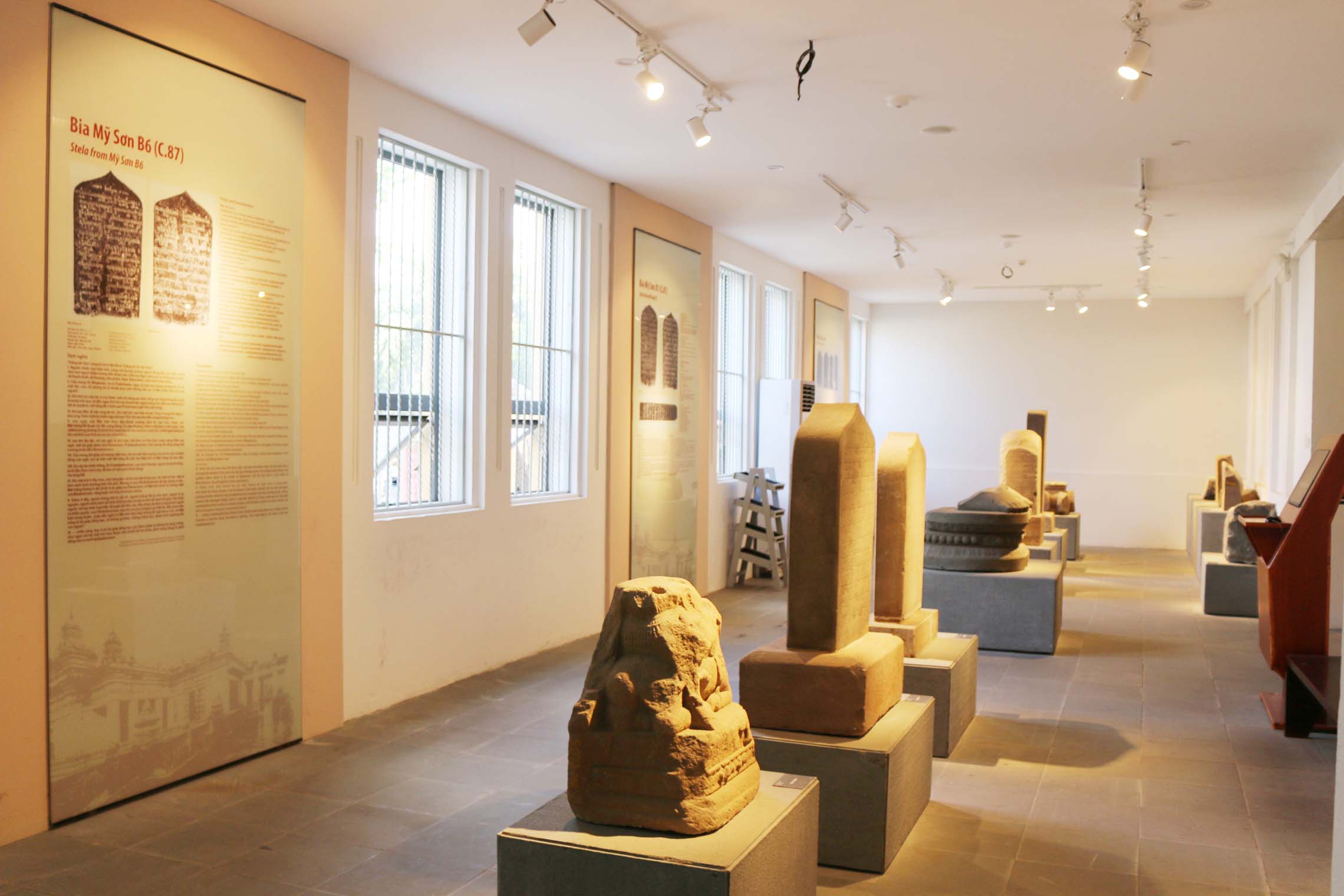
Van Khac Exhibition Room shows stone steles and inscriptions carved by the Cham people
This exhibition room showcases artifacts that contain the language and writing of the ancient Champa people. Pre-10th century steles used Sanskrit and the Brahmi script. From the 10th century onwards, the ancient Cham language gradually replaced Sanskrit on the steles.
Want to explore further? Check out our post about travel guide to Vietnam!
Da Nang Museum of Cham Sculpture is indeed a remarkable destination that bears the cultural and historical significance of the Champa civilization. If you have an interest in archaeology, architecture, culture, and history, I highly recommend visiting this excellent site. To obtain more information about Vietnam package tours, please contact New Asia Tours. We are always delighted to serve you.



